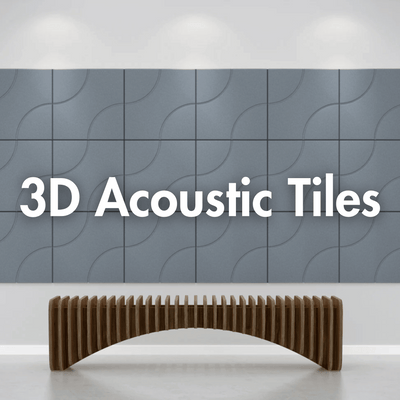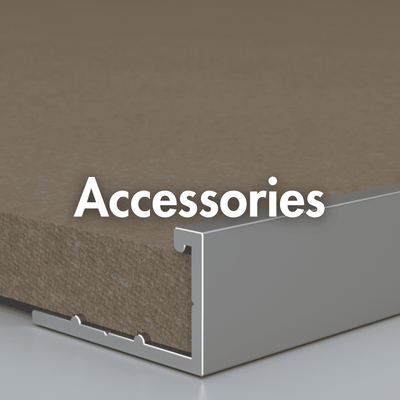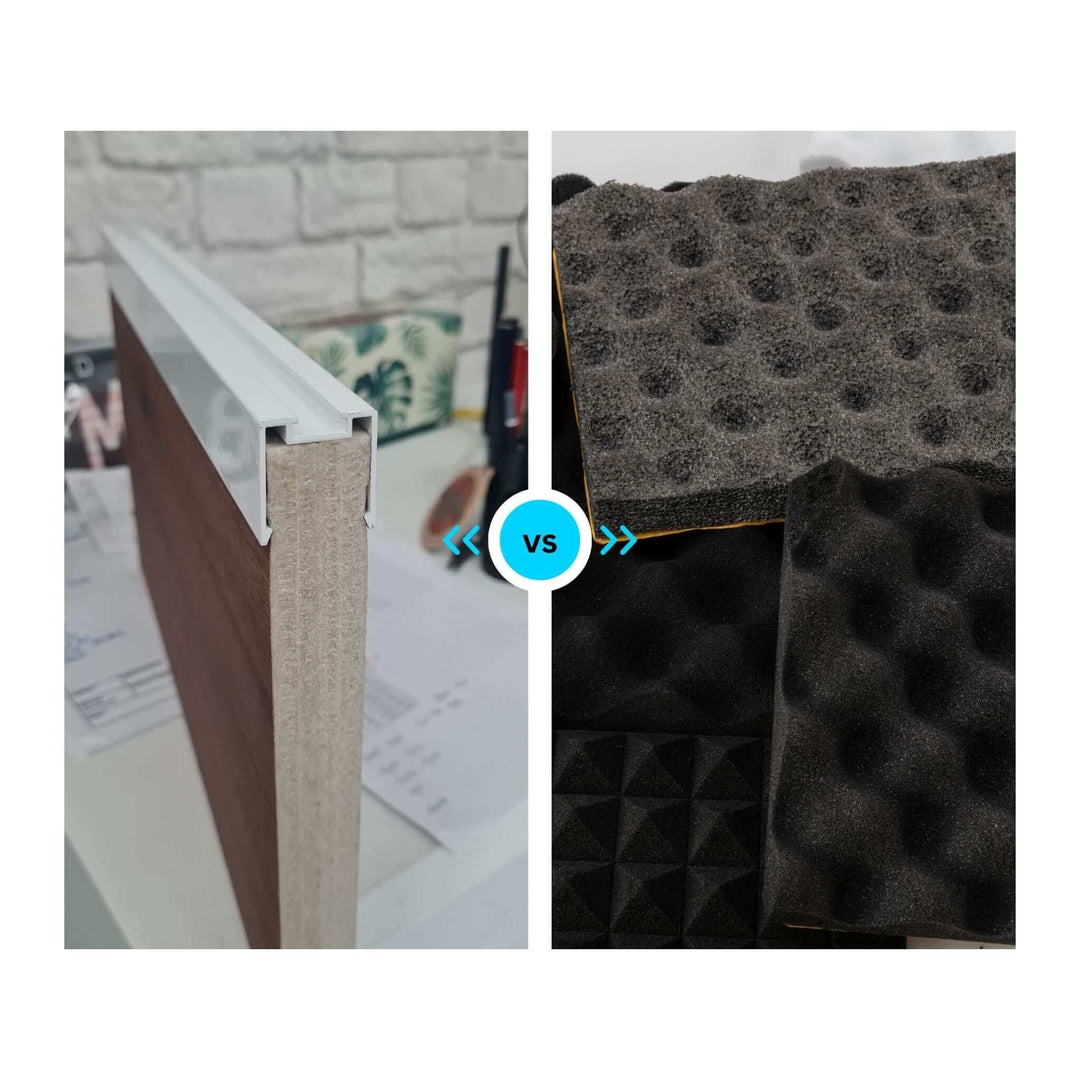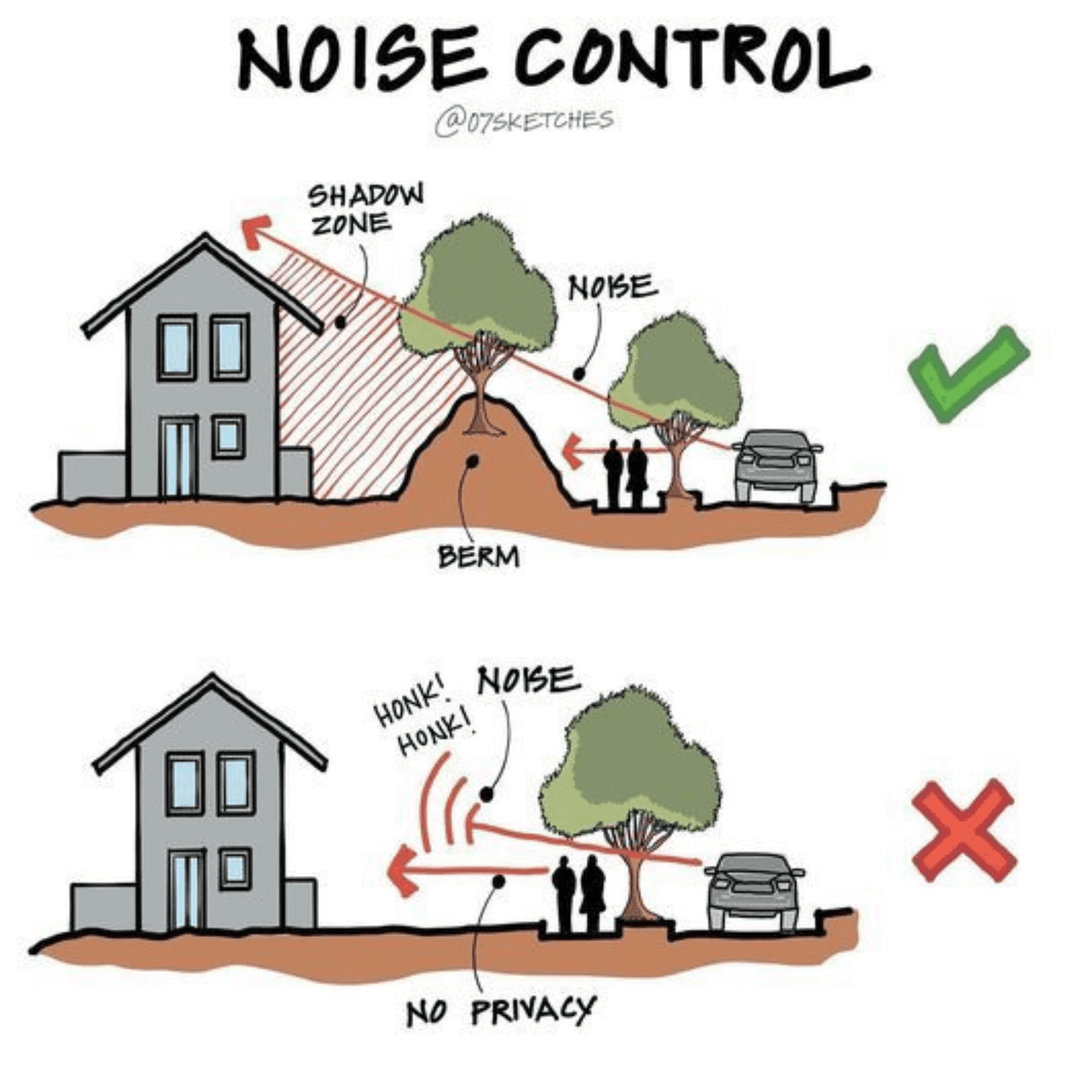Sound Absorption vs. Soundproofing: What’s the Difference?

In the world of acoustics, reducing noise and creating peaceful spaces is a common goal, but understanding how sound absorption and soundproofing differ is essential for achieving it. While these terms are often used interchangeably, each serves a distinct purpose and works in unique ways. Knowing whether you need sound absorption or soundproofing (or both) can help ensure that your acoustic solutions effectively meet your needs.
What is Sound Absorption?
Simply put, sound absorption refers to the process of soaking up sound within a room. This technique prevents sound waves from bouncing off hard surfaces and reduces echoes and reverberation. Imagine a sponge soaking up water - that’s how acoustic materials absorb sound energy, creating a quieter, more comfortable space.
Sound absorption is achieved through specialised materials, such as acoustic panels, ceiling tiles and soft furnishings, which trap sound waves. This makes absorption ideal for spaces where clear sound and minimal echoes are important, such as offices, classrooms, and recording studios.
The Key Benefits of Sound Absorption:
- Reduces echo and reverberation.
- Improves sound clarity, making it easier to understand speech and music.
- Creates a more comfortable and focused environment, especially in open-plan areas.
What is Soundproofing?
Soundproofing on the other hand, is about preventing sound from entering or leaving a room. Unlike sound absorption, which deals with managing sound within a space, soundproofing aims to block sound transmission through walls, doors, floors, or ceilings. Think of it as creating a barrier that keeps noise contained within a space or keeps unwanted sounds out.
Effective soundproofing requires dense, often multi-layered materials that block or dampen sound waves. These might include specialised soundproofing walls, doors, windows, or floors. Soundproofing is particularly valuable in settings where privacy and minimal outside noise are essential, such as meeting rooms, medical facilities or residential spaces.
The Key Benefits of Soundproofing:
- Prevents noise from entering or leaving a space.
- Improves privacy, especially in offices or rooms where confidential conversations occur.
- Creates a quiet, focused environment, even in noisy surroundings.
Sound Absorption vs. Soundproofing: Key Differences
While both sound absorption and soundproofing reduce unwanted noise, their methods and intended results differ significantly. Here’s a closer look at the primary distinctions:
- Purpose: Sound absorption reduces echo within a room; soundproofing blocks noise from moving in or out.
- Materials: Absorption materials are typically soft and porous, like foam or fabric; soundproofing materials are dense and often multi-layered, like mass-loaded vinyl or acoustic barriers.
- Application: Sound absorption is ideal for improving sound quality in a room; soundproofing is used to isolate the space from external noise.
How Acoustic Sound Products Can Help
At Acoustic Sound Products, we offer a range of both sound-absorbing and soundproofing solutions to suit your specific needs. Whether you’re looking to reduce echo in a busy office, block noise from entering a home studio, or create privacy in a commercial space, we’ll work with you to determine the best approach.
Our sound-absorbing products, such as acoustic panels and ceiling tiles, are perfect for controlling noise within a room. Meanwhile, our soundproofing solutions provide the noise isolation you need for private or quiet environments. With tailored consultations and expert guidance, we make it easy to create a peaceful, productive space that meets your design and acoustic requirements.
FAQs
Do I need sound absorption or soundproofing for my space?
It depends on your goals. If you want to reduce echo and improve sound quality within a room, sound absorption is best. For blocking noise from entering or exiting a space, soundproofing is the right choice.
Can I combine sound absorption and soundproofing?
Yes! In many cases, combining both techniques creates the best results, especially in settings like recording studios or meeting rooms where sound control and privacy are both essential.
What materials are used for sound absorption?
Sound-absorbing materials are typically soft and porous, like foam, fabric, or fiberglass, which effectively trap sound waves and reduce echo.
What materials work best for soundproofing?
Dense materials like mass-loaded vinyl, drywall, and specialised soundproofing barriers are most effective for blocking noise transmission.
How can I find the right solution for my space?
Our team at Acoustic Sound Products can assess your space and recommend the best combination of sound absorption and soundproofing solutions to meet your needs.



















